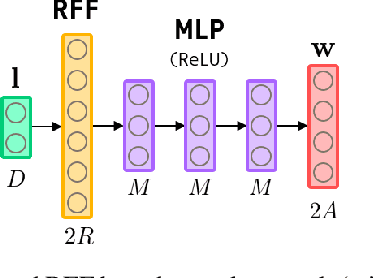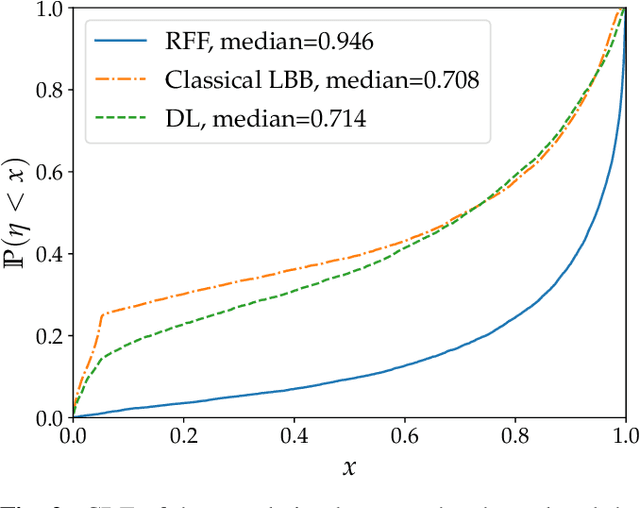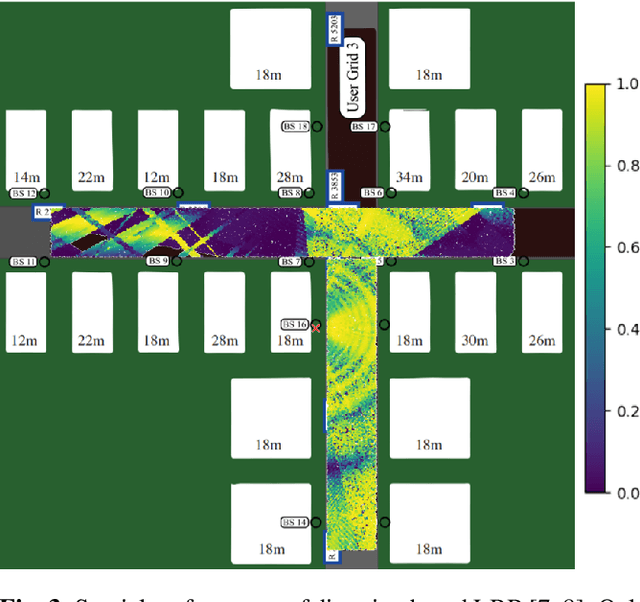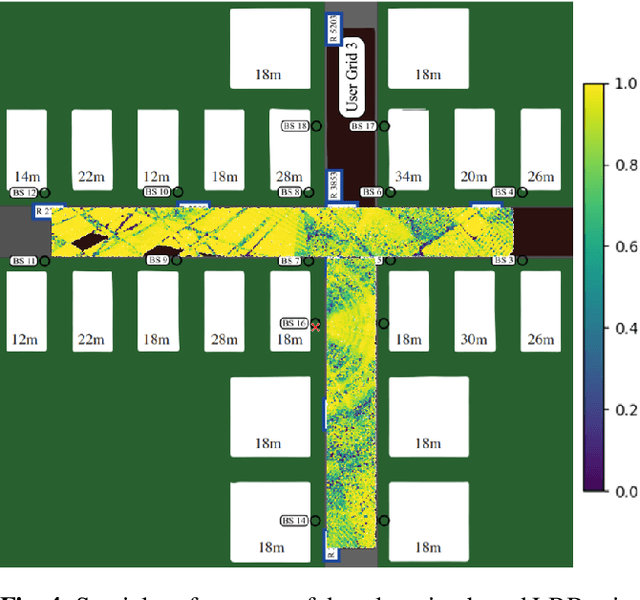Matthieu Crussière
INSA Rennes, IETR
Model-based Neural Data Augmentation for sub-wavelength Radio Localization
Jun 05, 2025Abstract:The increasing deployment of large antenna arrays at base stations has significantly improved the spatial resolution and localization accuracy of radio-localization methods. However, traditional signal processing techniques struggle in complex radio environments, particularly in scenarios dominated by non line of sight (NLoS) propagation paths, resulting in degraded localization accuracy. Recent developments in machine learning have facilitated the development of machine learning-assisted localization techniques, enhancing localization accuracy in complex radio environments. However, these methods often involve substantial computational complexity during both the training and inference phases. This work extends the well-established fingerprinting-based localization framework by simultaneously reducing its memory requirements and improving its accuracy. Specifically, a model-based neural network is used to learn the location-to-channel mapping, and then serves as a generative neural channel model. This generative model augments the fingerprinting comparison dictionary while reducing the memory requirements. The proposed method outperforms fingerprinting baselines by achieving sub-wavelength localization accuracy, even in NLoS environments. Remarkably, it offers an improvement by several orders of magnitude in localization accuracy, while simultaneously reducing memory requirements by an order of magnitude compared to classical fingerprinting methods.
Model-based Deep Learning for Beam Prediction based on a Channel Chart
Dec 04, 2023Abstract:Channel charting builds a map of the radio environment in an unsupervised way. The obtained chart locations can be seen as low-dimensional compressed versions of channel state information that can be used for a wide variety of applications, including beam prediction. In non-standalone or cell-free systems, chart locations computed at a given base station can be transmitted to several other base stations (possibly operating at different frequency bands) for them to predict which beams to use. This potentially yields a dramatic reduction of the overhead due to channel estimation or beam management, since only the base station performing charting requires channel state information, the others directly predicting the beam from the chart location. In this paper, advanced model-based neural network architectures are proposed for both channel charting and beam prediction. The proposed methods are assessed on realistic synthetic channels, yielding promising results.
Optimizing Multicarrier Multiantenna Systems for LoS Channel Charting
Sep 28, 2023Abstract:Channel charting (CC) consists in learning a mapping between the space of raw channel observations, made available from pilot-based channel estimation in multicarrier multiantenna system, and a low-dimensional space where close points correspond to channels of user equipments (UEs) close spatially. Among the different methods of learning this mapping, some rely on a distance measure between channel vectors. Such a distance should reliably reflect the local spatial neighborhoods of the UEs. The recently proposed phase-insensitive (PI) distance exhibits good properties in this regards, but suffers from ambiguities due to both its periodic and oscillatory aspects, making users far away from each other appear closer in some cases. In this paper, a thorough theoretical analysis of the said distance and its limitations is provided, giving insights on how they can be mitigated. Guidelines for designing systems capable of learning quality charts are consequently derived. Experimental validation is then conducted on synthetic and realistic data in different scenarios.
Model-based learning for location-to-channel mapping
Aug 28, 2023Abstract:Modern communication systems rely on accurate channel estimation to achieve efficient and reliable transmission of information. As the communication channel response is highly related to the user's location, one can use a neural network to map the user's spatial coordinates to the channel coefficients. However, these latter are rapidly varying as a function of the location, on the order of the wavelength. Classical neural architectures being biased towards learning low frequency functions (spectral bias), such mapping is therefore notably difficult to learn. In order to overcome this limitation, this paper presents a frugal, model-based network that separates the low frequency from the high frequency components of the target mapping function. This yields an hypernetwork architecture where the neural network only learns low frequency sparse coefficients in a dictionary of high frequency components. Simulation results show that the proposed neural network outperforms standard approaches on realistic synthetic data.
Deep learning for location based beamforming with NLOS channels
Dec 29, 2021



Abstract:Massive MIMO systems are highly efficient but critically rely on accurate channel state information (CSI) at the base station in order to determine appropriate precoders. CSI acquisition requires sending pilot symbols which induce an important overhead. In this paper, a method whose objective is to determine an appropriate precoder from the knowledge of the user's location only is proposed. Such a way to determine precoders is known as location based beamforming. It allows to reduce or even eliminate the need for pilot symbols, depending on how the location is obtained. the proposed method learns a direct mapping from location to precoder in a supervised way. It involves a neural network with a specific structure based on random Fourier features allowing to learn functions containing high spatial frequencies. It is assessed empirically and yields promising results on realistic synthetic channels. As opposed to previously proposed methods, it allows to handle both line-of-sight (LOS) and non-line-of-sight (NLOS) channels.
 Add to Chrome
Add to Chrome Add to Firefox
Add to Firefox Add to Edge
Add to Edge